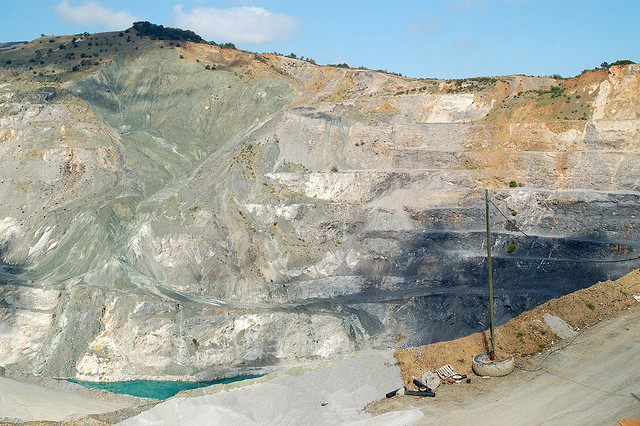When it comes public perceptions of pollution here in the Bay Area, the oil refineries that stretch from Richmond to Vallejo get the lion’s share of attention. But when local air pollution regulators set out to cut mercury pollution, their top target was a quarry called Lehigh Southwest Permanente, tucked in the otherwise wooded hills of Cupertino.
This quarry was once the nation’s largest producer of a substance called Portland cement, the critical ingredient in concrete for roads, bridges, foundations, and just about any building. Today, the facility still supplies 50 percent of the region’s Portland cement, and it has the dubious distinction of being far and away our biggest mercury emitter.
Lehigh’s air pollution affects everyone in the Bay Area, but it’s been of immediate concern to the surrounding neighborhood. On Thursday night, Dec. 6 at 7pm, residents are invited to a town hall meeting hosted by GreenTown Los Altosto learn about the facility’s impacts on air quality and Permanente Creek watershed. The quarry is situated on the border of Los Altos. The meeting will be held at Hillview Community Center, 97 Hillview Ave., Room 17, Los Altos.
New regulations from the Bay Area Air Quality Management District (BAAQMD) are requiring the Lehigh plant to strictly limit mercury emissions, as well as other pollutants, and to continuously monitor those emissions during production.
“The Bay is already greatly impaired by the presence of mercury, so it’s a good thing that the (air district) is taking the situation seriously, and trying to make sure that Lehigh reduces their mercury emissions,” said Abigail Blodgett, an attorney for Baykeeper, a San Francisco-based pollution watchdog group.
Neighbors will be happy to know that the plant also has to demonstrate that its operations aren’t posing a significant health threat to the community.
Airborne mercury can easily contaminate waterways when it comes down in rainfall, causing reproductive problems to aquatic life. The heavy metal concentrates up the food chain, making the impact on predators, and eventually humans, particularly severe.
During the Gold Rush, mercury mining was a major industry in the area around San Jose, as mercury was used to separate gold from ore. Nowadays, the Lehigh quarry is the major emitter since it handles limestone, a rock with high levels of naturally occurring mercury that’s used to formulate cement. Nationwide, Portland cement manufacturing is the third highest source of mercury emissions, behind only coal-fired power plants and industrial boilers and furnaces.
Looming federal rules on Portland cement manufacturing might be delayed until 2015, but the air district’s actions mean the Lehigh facility has to clean up its act right away. The company said doing so would “put the facility at a significant disadvantage with the rest of the cement industry.”
Nevertheless, Lehigh has already started improving its operations with new technology that removes mercury emissions, a move the company says is a first for California.
Samantha Juda is a Bay Nature editorial intern.


-300x186.jpg)